Submission
Not sure if you all heard about this already but figured I’d pass it along. They seem open to people tabling fyi
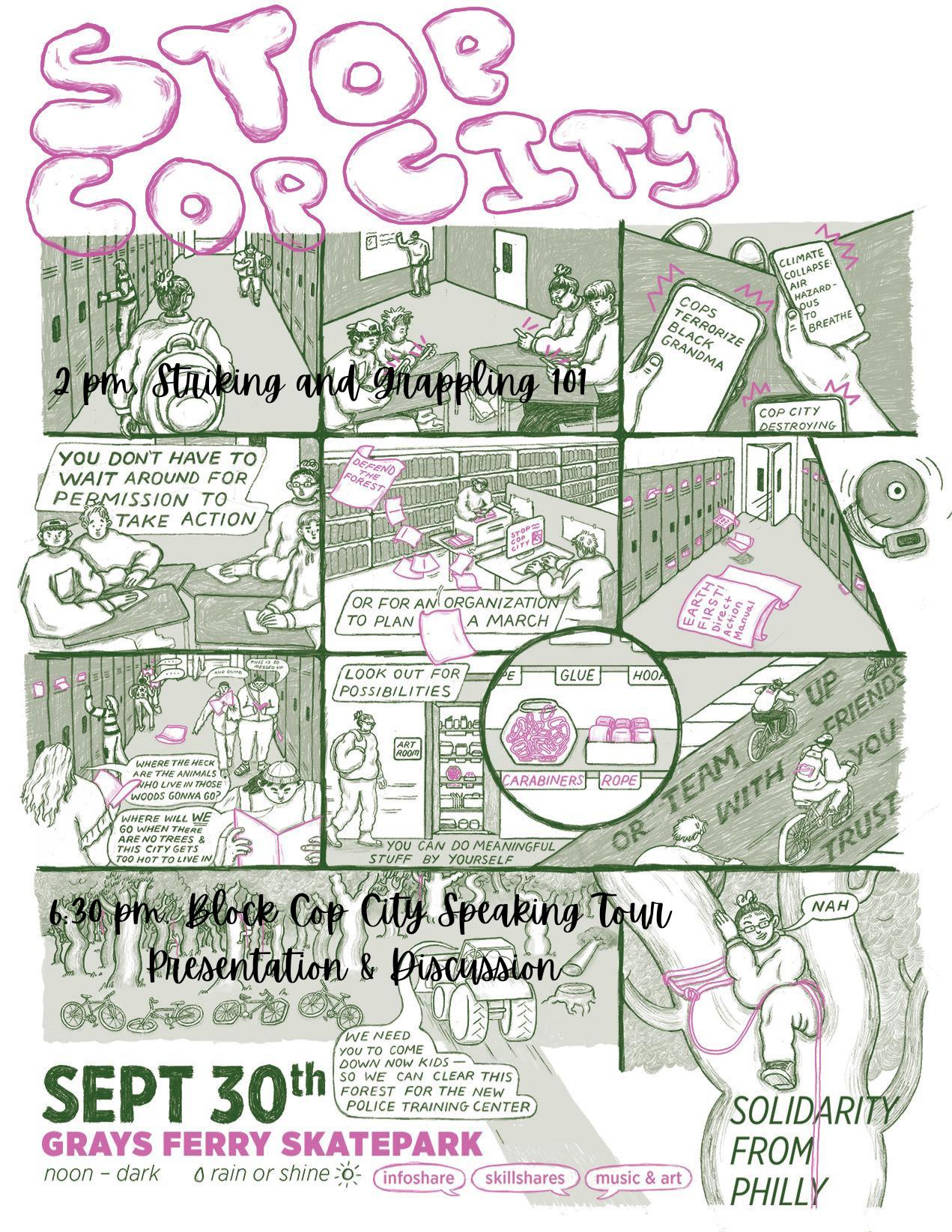
Submission
Not sure if you all heard about this already but figured I’d pass it along. They seem open to people tabling fyi

from Instagram

A TENANT WAS SHOT BY A MERCENARY DURING AN EVICTION (AGAIN)
On Tuesday, July 18th, a “deputy landlord-tenant officer” shot a 33-year-old woman in the leg during an eviction. On Wednesday, June 28th, a “deputy landlord-tenant officer” shot a dog during an eviction. On Wednesday, March 29th, a “deputy landlord-tenant officer” shot a woman in the head during an eviction. THEY CAN’T KEEP GETTING AWAY WITH IT! Marisa Shuter needs to be held accountable for the violence enacted by her deputies !Stay tuned for further calls to action
Submission
Amidst the huge crowds at Pride our affinity group had a lot of fun dancing and spitting on cops yelling at them to get the fuck out of pride. Several of their cop cars were spray painted “FTP” and “ACAB” and “Pride is a Riot!” There was some anti-gay hecklers that were attacked by various queer people throwing drinks and heavy objects at them. We also burned American some flags in the street. Goods were redistributed from various stores.
Some homophobic bigots were chased out of the Gayborhood and we are sure that many more Queer Revolutionary actions and general mischief happened as the night continued. Let’s keep the fight against the corporations, cops, bigots, and capitalism strong all year. Fuck Assimilation! Liberation Now! Bash Back!
Submission
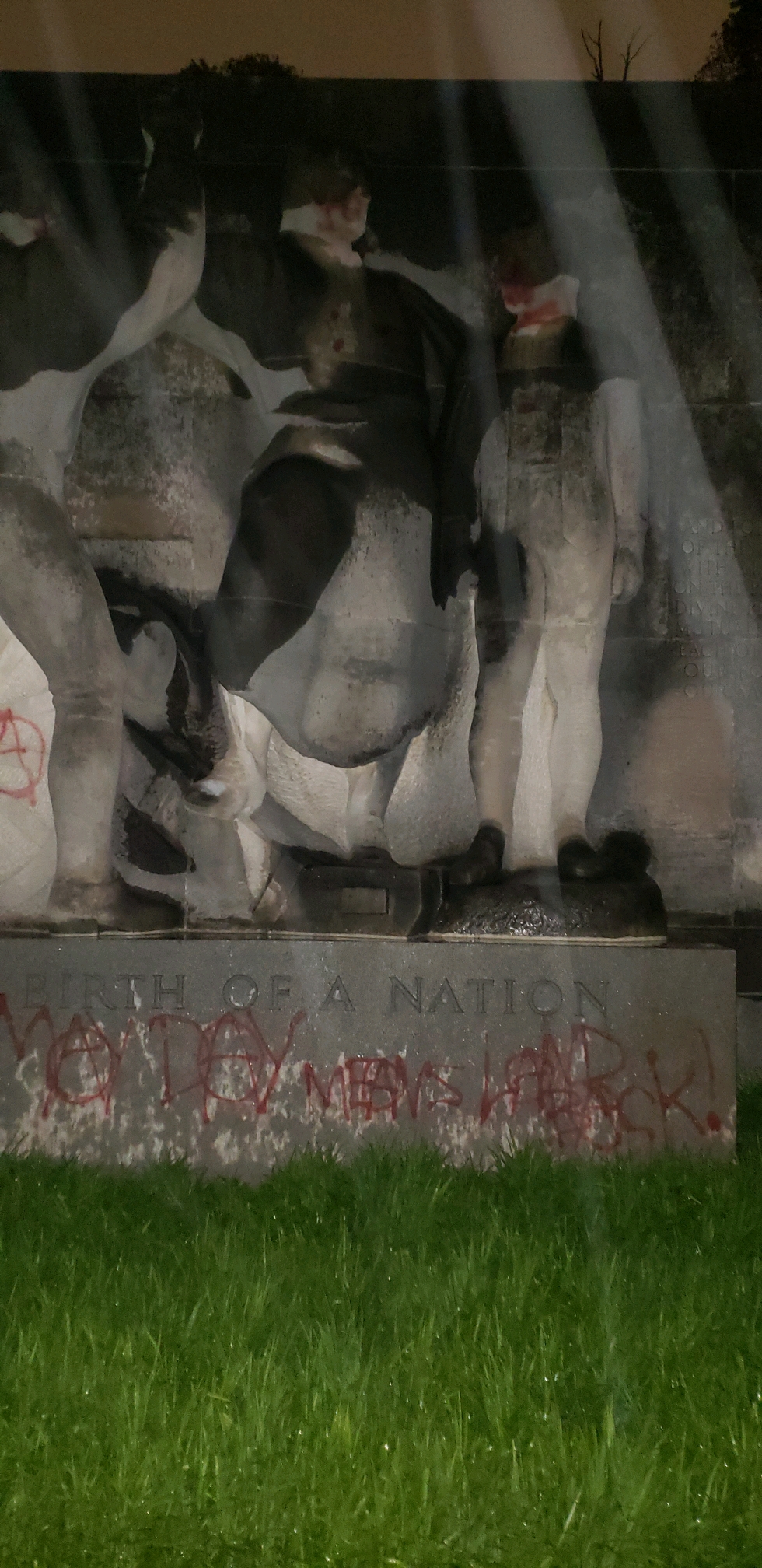
May Day graffiti was done on a settler colonial monument on Lenape Land. It says “May Day means Land Back!” – “Solidarity Means Attack” – “Smash colonialism!” – “Kill cops!” “ACAB” and more!
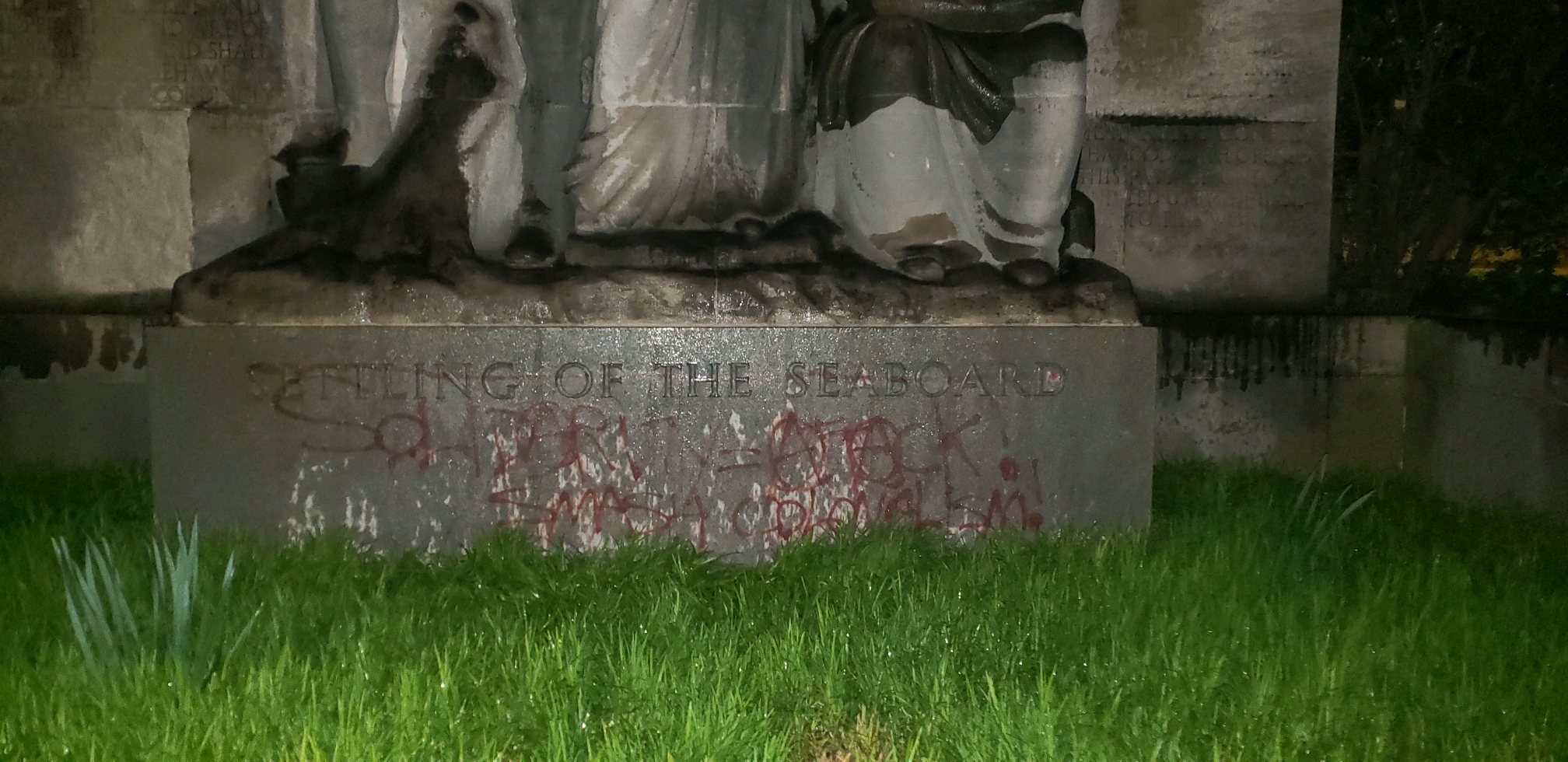


from Unoffensive Animal
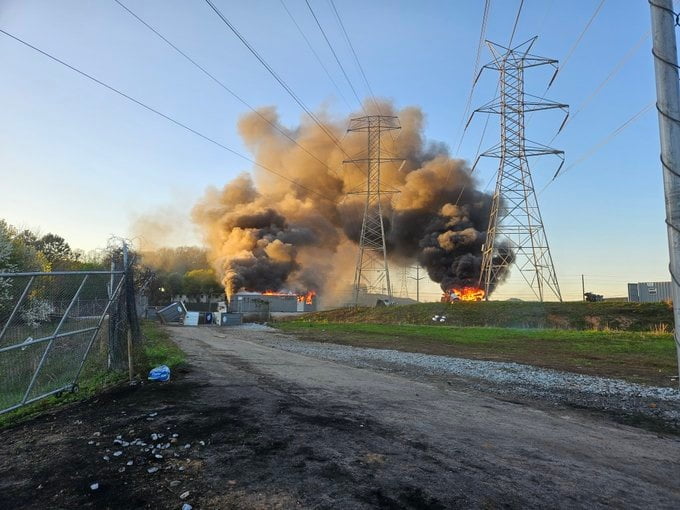 [This post only contains information relevant to Philadelphia and the surrounding area, to read the entire article follow the above link.]
[This post only contains information relevant to Philadelphia and the surrounding area, to read the entire article follow the above link.]On January 18th police murdered a forest defender, Tortuguita. Immediately, a call was put out for a “night of rage”. The rage was instead was not limited to one night, nor only retaliation.These actions have been claimed in honor, memory, vengeance, revenge, for, or in solidarity with Tortuguita.
From January 18th onward across the USA people held vigils, built barricades, attacked a realty office, attacked banks, smashed the windows of the skyscraper housing the Atlanta Police Foundation, torched a police cruiser, vandalized cars in a Porsche dealership, attacked UPS shipping center, set construction equipment on fire, and attacked the offices of those responsible for cop city. Across turtle island we felt it from California, Illinois, North Carolina, Minnesota, Colorado, Michigan, Atlanta, Georgia, Oregon, Pennsylvania, Oregon, Michigan, New York, Colorado, Indiana, and Minnesota.
In February across the USA, banks were attacked, excavators in Weelaunee forest were set on fire, Amazon delivery vehicles vandalized, Atlas offices targeted, a Norfolk Southern rail line sabotaged, the home addresses of employees of Atlas were published, in France a transmission pylon was set on fire. Rage was had from California, Brooklyn, New York, Georgia, South Carolina, Connecticut, Pennsylvania, to Bure France and back.
In March during the week of action in Atlanta, GA USA, a demonstration of 300 people stormed and destroyed a construction site and police staging area, and later that week machinery in Weelaunee was destroyed. More construction equipment was sabotaged and, offices vandalized. In late March the home addresses were published of several Judges, a Police Investigator, an Assistant Chief of police, and a GBI Special Agent.
By carrying our friends in our hearts and actions they live on in spirit and in memory. With Love and Rage, we carry on those who have been taken from us.
from Iffy Books

On Tuesday, April 11th at 6 p.m. we’re writing letters to ATL forest defenders, in solidarity with the ATL Week of Resiliency. See you there!
from Philly ABC

Just us at Iffy Books (319 N. 11th St. #2I) at 6:30pm on Monday, March 27th to send letters of solidarity to Urooj Rahman, a human rights lawyer and activist arrested during the protests in response to the murder of George Floyd.
Urooj has spent her legal career protecting the rights of refugees around the world. She spent the last year representing low income New Yorkers facing eviction. She received both her undergraduate degree and law degree from Fordham University where she championed, and continues to champion, civil rights. During her time at Fordham Law, Urooj co-directed an LGBTQI human rights defender training in Cape Town, South Africa and contributed to a shadow report on behalf of Afro-Colombian women submitted to the UN Convention on the Elimination of All Forms of Racial Discrimination (UNCERD).
During the 2020 protests in response to the murder of George Floyd, Urooj was arrested and then indicted on seven counts for causing damage by fire to an abandoned and previously vandalized police vehicle. After over a year of fighting a slew of federal charges that together carried a mandatory minimum of 45 years in prison and a possible life sentence, Urooj initially took a non-cooperating plea to one count of possession of an unregistered destructive device which carries a sentence up to 10 years. Prosecutors indicated that they would seek to apply a “terrorism” sentencing enhancement against Urooj, which would make it much more likely that she would be sentenced to the full 10 years.
In June of 2022, after months of additional litigation and negotiation, Urooj entered a new non-cooperating plea deal to only one count of Conspiracy, which carries a maximum sentence of only 5 years, and prosecutor agreeing to recommend a sentence of 18 to 24 months. On November 18, 2022, Urooj was sentenced to 15 months in prison with two years of supervised release and over $30,000 in restitution. She was ordered to turn herself to begin her sentence on January 15, 2023.
Snacks and letter-writing supplies will be provided. If you cannot make the event, send Urooj some love at the address below. Note: Her name is Urooj but the BOP has her in the system as “Uroo,” so for the time being it is probably best to address the envelope that way.
Uroo Rahman #83822-053
FDC Philadelphia
P.O. Box 562
Philadelphia, PA 19105
We will also send a birthday card to another political prisoner born in April: Mumia Abu-Jamal (the 24th).
from Making Worlds Books
Join us on 3/30 for a benefit film screening and discussion of Riotsville, USA.
Advance registration is encouraged, please RSVP here.
The fight in Atlanta against “Cop City” is heating up. The Autonomous South Philly Cinema Association is hosting a benefit screening of Riotsville, USA (2022, 91 mins) to raise funds for mounting legal expenses. Riotsville, USA takes its name from the mock cities built by the U.S. government in the late 1960s to train police and military in repressive techniques to throttle uprisings, much as Cop City hopes to do — unless the struggle against it is victorious.
from Jersey Counter-Info
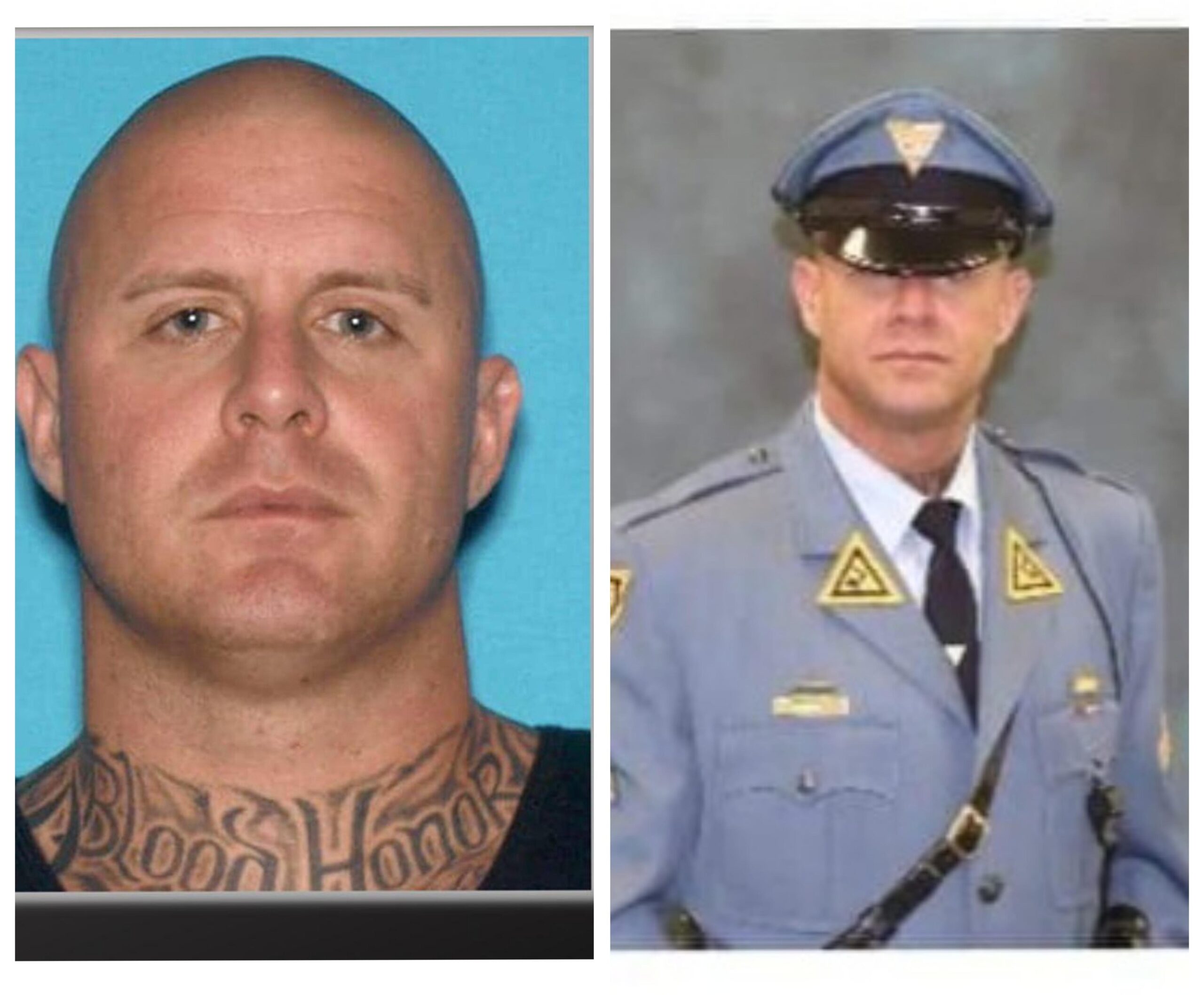
On March 21, 2023, mainstream news media outlets reported that a local NJ State Trooper, Jason Dare, had been missing for two days after he walked out of a Delaware County (Delco) PA drug and alcohol rehab facility. Every mainstream news media outlet that covered Dare’s disappearance all echoed the same thing: that Dare was a dedicated police officer since 2004 and a well loved staple of his community. As of March 24, 2023, Dare was found alive and unharmed in Bucks County, according to New Jersey State Police and local news media outlets. What each news media outlet conveniently left out of all of their coverage, is that Dare is a neo-nazi and has openly flaunted his fascist and racist views for over a decade, while being employed as a NJ State Trooper.
As pictures of Dare surfaced in news articles, regional community members were quick to point out some of Dare’s more noticeable neo-nazi tattoos, like his “blood and honor” (a common neo-nazi signifier) throat tattoo and several “iron cross” tattoos on his arms and chest. Dare’s family retorted that he wasn’t a nazi but instead got the throat tattoo as a memorial piece for his brother Nick Dare. Like Jason, Nick was also a police officer, who killed himself back in 2013, likely due to three separate disciplinary charges he was facing from Hamilton Township, NJ. Jason Dare’s family’s willingness to believe his flimsy excuse despite his other nazi tattoos, clothing choices, interests, and general bone-head appearance shows his family is in deep denial over who he really is.
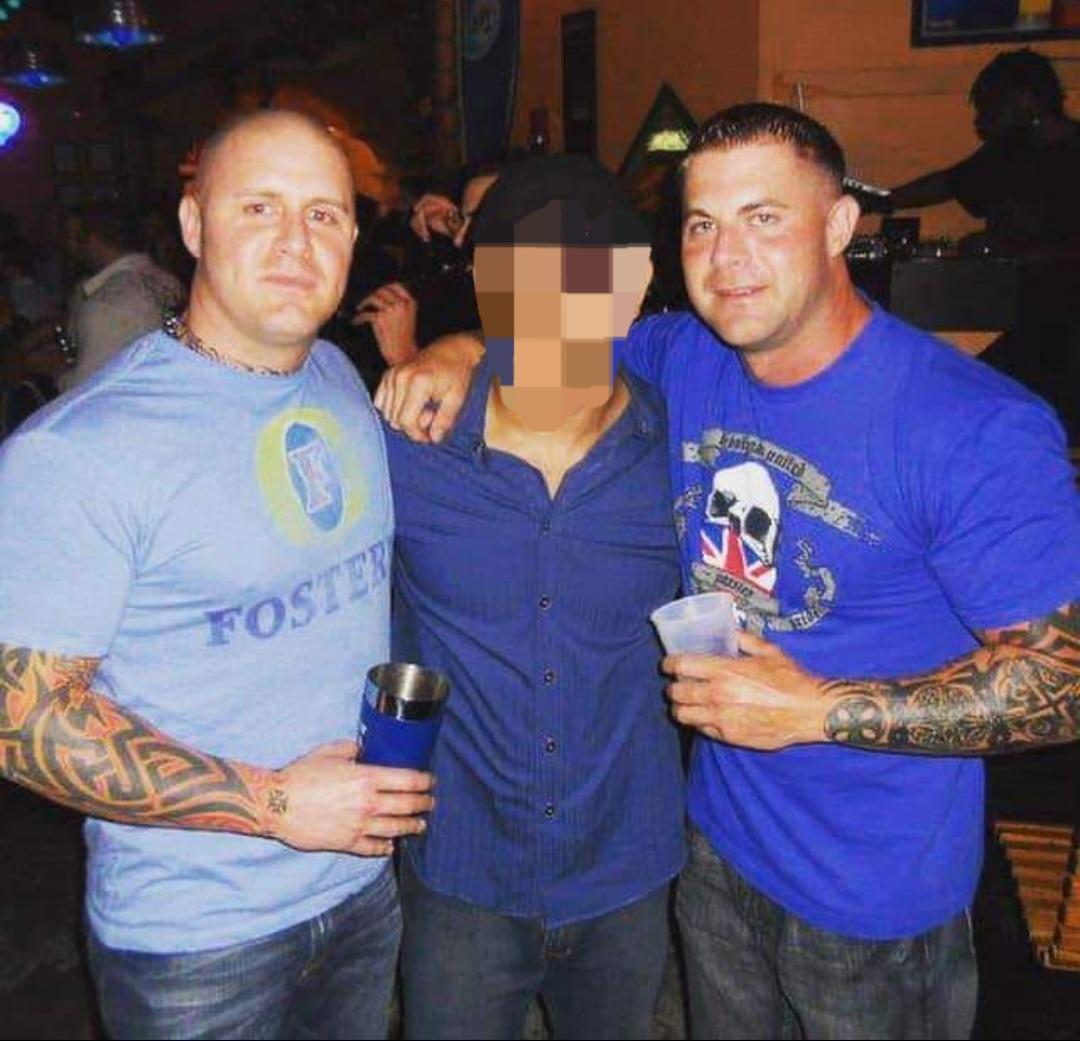

While Jason Dare somehow concealed his neo-nazi affiliation to his family, he was not concerned what his co-workers and fellow police officers at the NJ State Police would think. While actively employed as a NJ State Trooper, Dare slowly built his neo-nazi tattoo collection at work and in his free time when hanging out with his co-workers. It’s not so surprising, given the history behind policing in the so-called united states. It is however surprising that Dare was able to operate publicly as both a neo-nazi and NJ State Trooper and not draw any public attention or outcry.

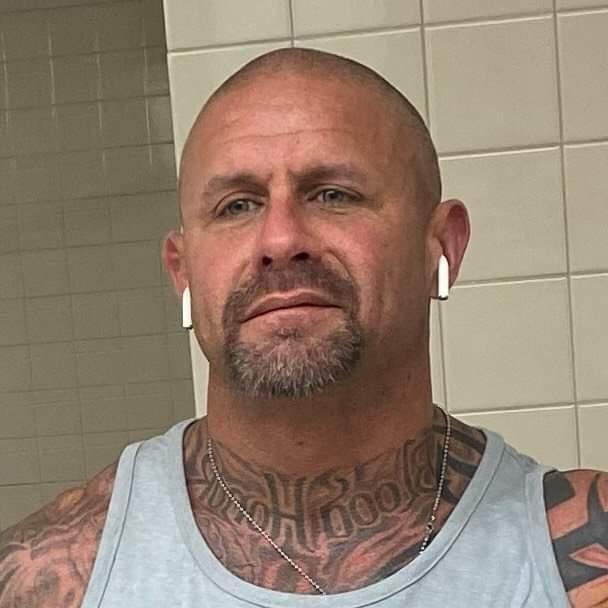
Perhaps more concerning, however, is Dare’s possible affiliation the violent neo-nazi street gang Keystone United, formerly known as Keystone State Skinheads (KSS). While a PA based group, Keystone United has a presence in the region, notably in South Jersey, where members and supporters, like Jason Cunningham, have been recruited from. Dare has a pit bull head tattoo on the right side of his chest, which is identical to the Keystone United symbol. Keystone United members also sport this tattoo and symbol regularly. Dare’s Keystone United styled pit bull is also embossed with the number “165” on the dog’s forehead. It is unclear at this time what connection this number may have with Keystone United or other neo-nazi groups, but it should be noted with caution.

Another disconcerting fact, is that Dare traveled from his residence in Vineland NJ (home to another neo-nazi Richard Rygaard) and traveled to Delco Pennsylvania to get treatment for drug and alcohol addiction. Delco, is a known stronghold for Keystone United, and several members and supporters live there. Dare’s abrupt disappearance from Delco coupled with his possible connection to Keystone United leave many questions as to his whereabouts and who he was with.
Unsurprisingly, the NJ State Police went into damage control as the story of Dare’s disappearance developed, even after he was found. NJ State Police attempted to cover up the public controversy over Dare’s visible neo-nazi tattoos and altered pictures of him. In some instances they totally replaced his head shot photo with a completely different photo. The NJ State Police are trying to cover themselves and prevent further public outcry.
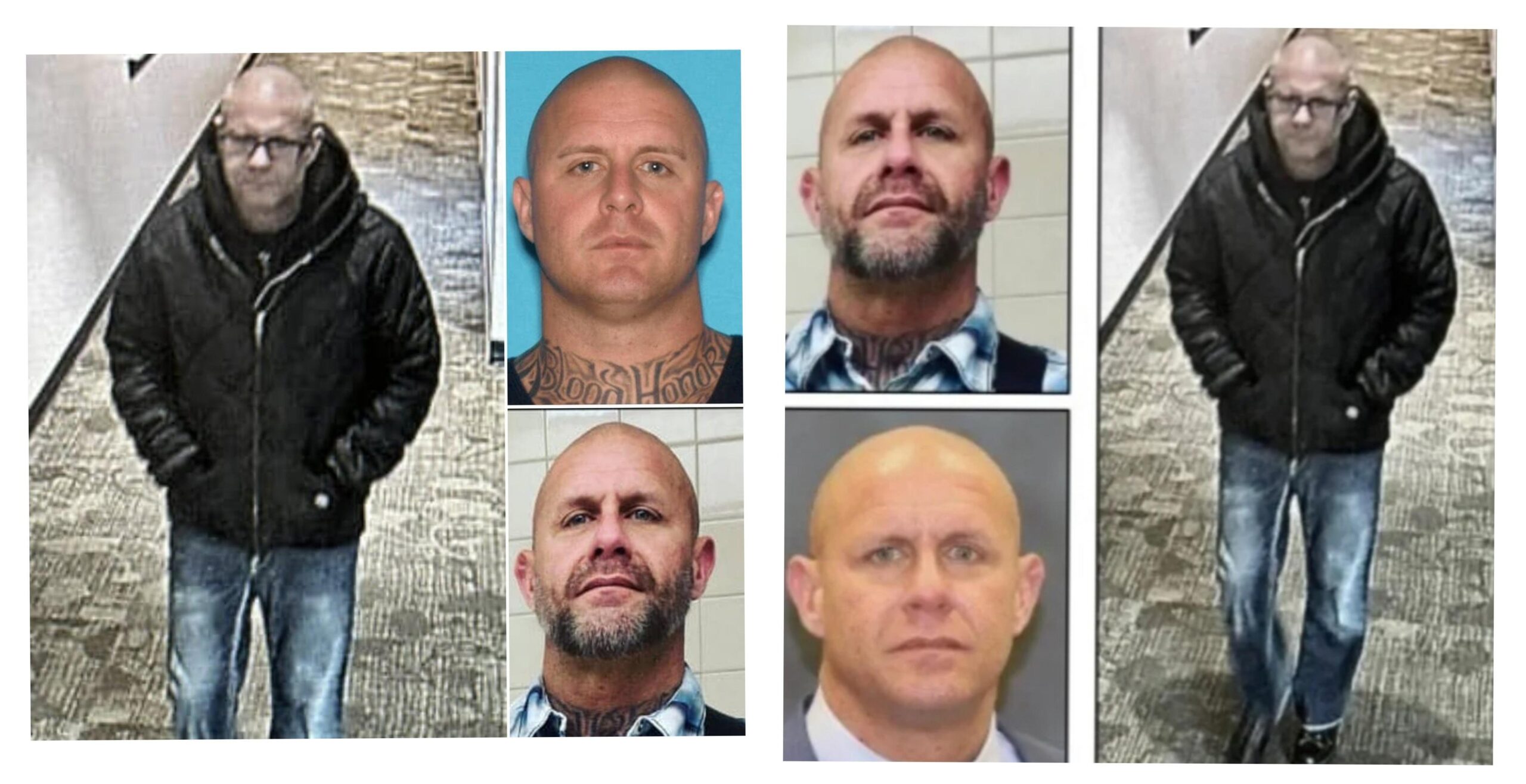
At this time while it is too early to draw any concrete conclusions as to what Dare was up to and who his exact fascist affiliations are with, two things are clear: Jason Dare is a neo-nazi and a NJ State Trooper with the power of the state behind him. He has access to firearms and has connections to other police officers across the region.
The following information is being released due to the risk he poses to marginalized communities, particularly People of Color:
Jason Dare is 46 years old, born on May 9, 1976. He is currently engaged to a Vineland Police Officer Isaura De La Rosa and he lives in Vineland NJ with his family. He has been employed as a NJ State Trooper since 2004 and earns over $100k a year. He is bald and has a goatee. He is covered in tattoos, many of which are white supremacist or neo-nazi in nature. He enjoys metal and punk music and has been known to frequent the NJ hardcore scene. He is active in his local Police Benevolent Association and is involved in a number of police social scenes in New Jersey.
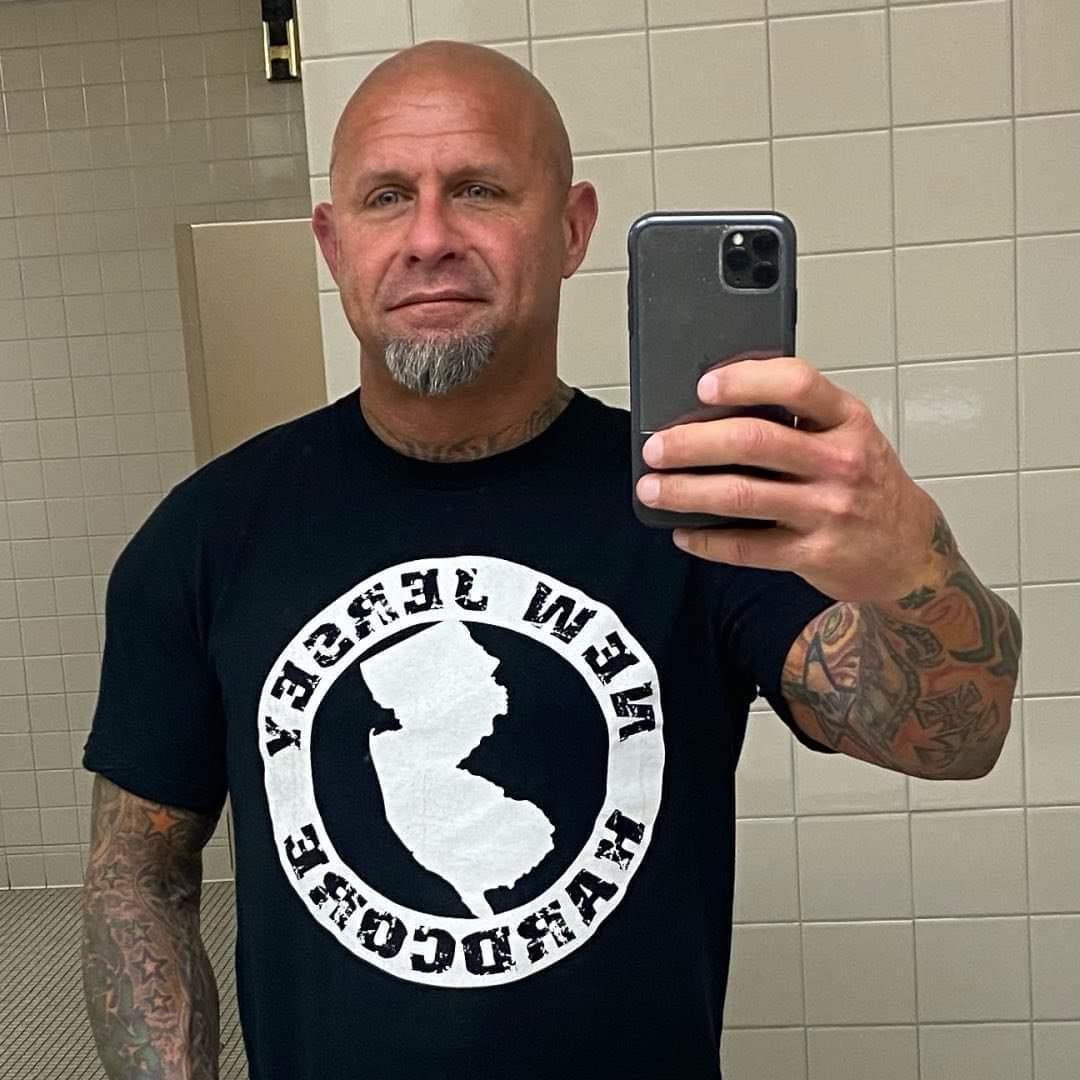
Send tips and information: njhatewatch@protonmail.com
from Scenes from the Atlanta Forest
[This post only contains information relevant to Philadelphia and the surrounding area, to read the entire article follow the above link.]
What up gang,
As you may have heard, a report (link: https://pestakeholder.org/wp-content/uploads/2023/03/PE-Profits-from-Destroying-the-Atlanta-Forest_March_2023.pdf) was released this week that shows how private equity companies are profiting off of cop city and cop city supporters. Yay!
However, attention is focused on just two of them, Roark Capital and Silver Lake management, even though the report names a bunch of other companies that invest in selling shit to APD and other cops. Boo!
The team here at [REDACTED] takes Diversity, (Private) Equity, and Inclusion very seriously. In order to demonstrate our commitment we would like to address underrepresentation within the attention economy by introducing you to some companies named in the report and sharing their contact information so you can get in touch. Next steps? That’s where you get to show off your creativity. Enjoy!
(This is mostly all copied from their websites, but don’t forget to do your own research and double check things. Also remember that if webpages change suddenly Internet Archive is your friend.)
LLR Partners
people
places
socials
Submission
<3

from Making Worlds Books
Join us for an editor-led discussion of the recently published book, The George Floyd Uprising.
Written during the riots, The George Floyd Uprising is a compendium of the most radical writing to come out of that long, hot summer. These incendiary dispatches—from those on the front lines of the struggle—examine the new horizons opened by the revolt, as well as the social, tactical, and strategic obstacles it confronted. This practical, inspiring collection offers a toolbox for all those actively seeking to expand and intensify revolts in the future, and it is essential reading for everyone interested in toppling the state, racism, and capitalism.
Advanced registration encouraged. Click here to register.
More about the book:
In the summer of 2020, America experienced one of the biggest uprisings in half a century. After George Floyd’s murder at the hands of Minneapolis police, angry crowds took to the street night after night, fighting the police, looting, and eventually burning down the Third Precinct. The revolt soon spread to cities large and small across the country, where rioters set police cars on fire, sacked luxury shopping districts, and forced the president into hiding in a bunker beneath the White House. Throughout the summer and into the fall, localized rebellions continued to erupt in Atlanta, Chicago, Kenosha, Louisville, Philadelphia, and elsewhere.
Written during the riots, The George Floyd Uprising is a compendium of the most radical writing to come out of that long, hot summer. These incendiary dispatches—from those on the front lines of the struggle—examine the new horizons opened by the revolt, as well as the social, tactical, and strategic obstacles it confronted. This practical, inspiring collection offers a toolbox for all those actively seeking to expand and intensify revolts in the future, and it is essential reading for everyone interested in toppling the state, racism, and capitalism.
About the Editors:
Vortex Group is an anonymous collective of writers who desire an end to this world and the beginning of a new one.
from Scenes From The Atlanta Forest
In solidarity with the struggle against the police, entertainment and real estate industry in the Welanuee forest, the mainline belonging to the Norfolk Southern company in Lenape territory north of so called Philadelphia was sabotaged. Copper wire was used to connect the tracks, tripping the signal and potentially stopping train traffic until the wire is located. This action is incredible easy and simple to repeat.
NS funds the Atlanta police foundation, and is also responsible for the large spill of toxic chemicals in East Palestine, Ohio. The spill of vinyl chloride is toxic when it leaks into the ground and air, but don’t forget that this chemical is being used in large scale production of everyday industrial products. Large shipping companies like NS are the circulatory system of industrial colonialism. NS is responsible for massive ecological and social devastation through disasters like the recent derailment but they do even more damage when they function with out derailments. So many destructive companies can not function with out NS and other shipping and logistics companies. How would the massive mono cultures of industrial agriculture move their soy and corn to processing plants and slaughter houses? How would Loggers transport lumber to and from mills? How would oil and other chemicals move from extraction to the industry that so readily consume them? How would Amazon get shipping containers from cargo ships to distribution centers with out NS, and the other rail roads?
Perhaps NS funds cop city because they understand both how crucial they are in building a dead world and exactly how vulnerable they are.
With love for Tort, and infinite hostility for cops who killed them.
from Unicorn Riot
Philadelphia, PA – Protests around the U.S. have increased recently against the proposed Public Safety Training Center near Atlanta. At the Philadelphia City Hall on around noon on Friday, Feb. 24, opponents held a rally.
The #StopCopCity movement aims to have funders and contractors withdraw from the project in order to prevent the proposed site from demolishing the largest urban forest in the USA. Pending court cases claim that the Atlanta Police Foundation has ignored local laws and environmental regulations in order to rush construction of the complex against the concerns of nearby residents.
Groups calling for the rally included Extinction Rebellion Philly, and Fridays for Future Philadelphia. According to a flyer the call is to “support land defenders in Atlanta, resist police brutality & militarization, protect the right to protest.”
After rallying at City Hall, the protest coalition stopped outside the offices of AXA, an insurance corporation targeted for providing liability coverage to Brasfield Gorrie, a general contractor hired by the Atlanta Police Foundation to help demolish the Atlanta Forest to build the contested urban warfare training complex.
Protesters attempted to deliver a letter to AXA but were reportedly denied the opportunity to hand-deliver it to executives inside the office suite. AXA has not responded to Unicorn Riot’s request for comment regarding today’s protest as of the time of this writing.